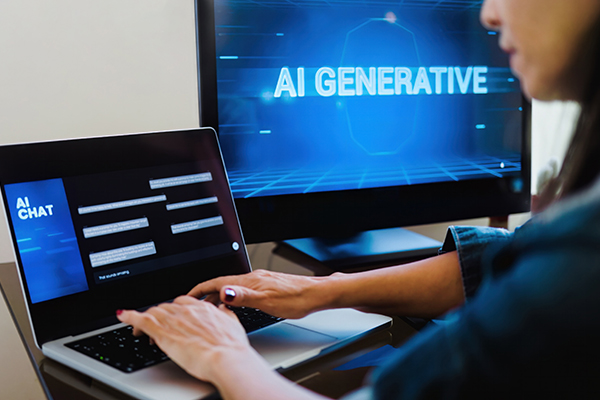Search engine optimization (SEO) has never been a “set it and forget it” tactic, but in recent years, the environment has shifted faster than most marketers can keep up. At the center of those shifts is one undeniable force: Google’s AI.
Those days of ranking based on keyword frequency and the volume of backlinks are history. Google’s machine learning environments today are rewriting the playbook. If you want to stay seen in search, understanding how search engine AI works—and how to position your strategy accordingly—is no longer a choice.
Here in this post-practical guide, we will analyze the most important AI updates Google has introduced to its search engine, what it means for your SEO strategy, and what you can do now to keep pace.
Why Google is Using AI for Search
Google’s mission has been to make the world’s information organized and accessible to everyone, everywhere, and make it useful. But people’s expectations have shifted. People no longer type robotic keyword phrases—they ask, speak their questions aloud to their phones, or image search. And they demand instantaneous, relevant info.
To fill this demand, Google began to use artificial intelligence (AI) in its search algorithms, with:
- RankBrain (2015) – a machine learning system helping Google comprehend search queries, especially those it’s never seen before.
- BERT (2019) – a natural language processing (NLP) system that understands language nuances like context and purpose.
- MUM (2021) – short for Multitask Unified Model, this AI can analyze content in different languages and media (text, video, images) to respond to more complex questions better.
These shifts represent a move toward smarter, more context-aware search, where Google is no longer merely matching words—it’s understanding meaning.
What These AI Updates Mean for SEO
If you’re still basing your SEO strategy on keyword repetition and outdated ranking factors, it’s time for a reset. Google’s AI is now trained to favor helpful, relevant, and high-quality content that aligns with searcher intent.
Here’s how these changes impact your strategy:
1. Intent Over Keywords
With BERT and MUM algorithms, Google can now comprehend why an individual is searching—not just what they’re typing. If your content isn’t directly satisfying that intent, it won’t rank.
Tip: Cluster your keywords by intent type:
- Informational (“how does Google’s AI work?”)
- Navigational (“Google AI blog”)
- Transactional (“buy AI SEO software”)
Then write content that satisfies each goal.
2. Contextual Relevance Is Important
AI now assesses how well your content aligns with the bigger conversation. That means topical relevance, clarity, and authority. Simply writing a blog post about AI and SEO isn’t enough—you must demonstrate that your site regularly discusses related topics in-depth.
Tip: Create topic clusters. Begin with a pillar page (such as “AI in Search Engines”) and create subpages for related keywords, each linking back to the main subject.
3. Search Is Multimodal Now
With MUM, Google is becoming more intelligent about processing images, videos, and text together. That means content with blended media is going to perform better—especially when done optimally.
Tip: Include optimized images, infographics, and video content. Don’t forget alt text, schema markup, and transcriptions where needed.
How to Harness Google’s AI for SEO
So what does AI-optimized SEO look like? Take a step-by-step journey towards aligning with Google’s evolving algorithm.
Step 1: Do Smarter Keyword Research
Keyword tools alone are no longer enough these days. Leverage tools that provide semantic keyword relationships, search intent, and questions asked.
Use the following tools:
- SEMrush’s Topic Research
- AlsoAsked or AnswerThePublic
- Google Search’s “People Also Ask” and “Related Searches”
Step 2: Make Your Content Readable
Search AI prefers readable, well-organized bite-sized content. That is, readable typography, skimmable sections, and accessible design.
Optimize your structure:
- Divide up subjects with H2 and H3 subheads
- Use bullet points, highlighting in bolds, and concise paragraphs
- Add schema markup on FAQs, how-tos, articles, and products
Step 3: Increase Quality and Depth of Content
Your content should show topical expertise. Avoid shallow summaries—go beyond and attempt to provide solutions instead of summaries.
How to go deep:
- Provide novel insights or data
- Discuss multiple connected questions in one post
- Refer to further reading for deeper information
Step 4: Prioritize E-E-A-T (Experience, Expertise, Authoritativeness, Trustworthiness)
This is the basis of how AI models assess quality content. Google wants not only accurate but also credible and trustworthy content.
How to improve E-E-A-T:
- Include author bios and credentials
- Reference reliable sources
- Get your site HTTPS
- Include real-life experience or client examples
Step 5: Optimize for Voice and Conversational Search
Most AI-powered searches are now via voice assistants. That means your content must replicate natural language use.
Include conversational aspects such as:
- FAQs that answer complete questions
- Clean, short answers under 40 words (ideal for snippets)
- Blog content that imitates actual dialogue or search wording
The Future Function of AI in Search Engines
AI in search engines is just beginning. Google is still developing models that are more than a comprehension of words—they’re headed toward predicting action, personalizing results, and even generating content abstracts in the SERP itself.
In the near future, we can expect:
- Even further personalized search results based on history, device, and behavior
- Increased use of AI-generated content in results (consider search overviews and summaries)
- Higher importance of user interaction metrics such as dwell time, click-through rate, and bounce rate
Translation? It’s not necessarily about creating content—it’s about creating the correct content, for the correct audience, in the correct form.
Final Thoughts
Google’s AI is no longer a back-end improvement—it’s the foundation of search today. And it’s becoming even more intelligent. To ensure your content remains visible and competitive, you need to write with AI in mind—without sacrificing the human touch.
That means you need to focus on user intent, depth, context, and quality—all while considering how AI in search engines reads, ranks, and renders your content.
Your SEO strategy is no longer just about keywords—it’s about being machines’ understanding and users’ delight. And that’s exactly where the future of search is headed.
Reach out and Speak with an Expert if you have any questions.


